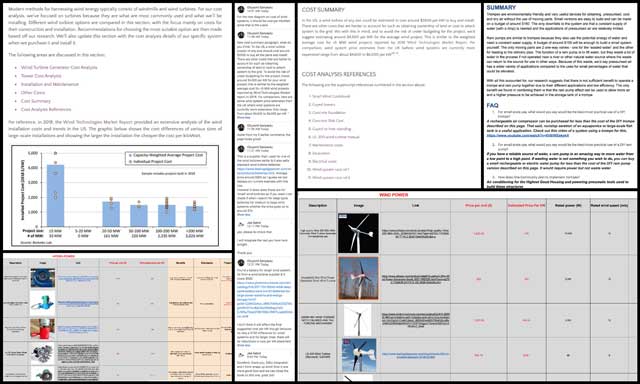Weekly Review: Identifying And Addressing Failures

Table of Contents
Establishing a Structured Weekly Review Process
A consistent and structured approach to your Weekly Review is crucial for maximizing its effectiveness. Without a defined process, it's easy to overlook key areas or fall back into old habits. Think of it as a scheduled meeting with yourself, dedicated to analyzing your performance and identifying areas for growth.
- Setting aside dedicated time each week: Schedule a specific time slot, whether it's 30 minutes on Friday afternoon or an hour on Sunday morning, and treat it as an unbreakable appointment.
- Using a specific template or method for recording successes and failures: Consistency is key. Use a journal, spreadsheet, project management software (like Asana or Trello), or even a simple note-taking app to track your progress and setbacks.
- Choosing a quiet, distraction-free environment for the review: Find a space where you can focus without interruptions – a quiet corner of your home, a coffee shop, or a dedicated workspace.
- Utilizing tools like journals, spreadsheets, or project management software: The right tools can significantly enhance the effectiveness of your Weekly Review. Experiment to find what works best for you.
Different methods can support your Weekly Review. Time blocking allows for dedicated focus on specific aspects of your week, while the Eisenhower Matrix (urgent/important) helps prioritize tasks and identify areas needing immediate attention. These tools help facilitate the identification of failures by providing a clear overview of your activities and their outcomes.
Identifying Failures Effectively During Your Weekly Review
Objectively identifying failures is paramount. This isn't about self-criticism; it's about honest self-assessment to fuel improvement.
- Reviewing project timelines and deadlines: Did you meet your deadlines? If not, why not?
- Analyzing key performance indicators (KPIs): Examine your metrics. Where did you fall short of your targets?
- Gathering feedback from colleagues, clients, or supervisors: Seek constructive criticism. External perspectives can offer insights you might miss.
- Reflecting on personal performance and identifying weaknesses: Be honest with yourself. What could you have done better?
- Using data visualization tools for a clearer overview of failures: Charts and graphs can reveal patterns and trends that might be missed in raw data.
For example, if you're a salesperson, review your sales figures and identify deals you lost. Analyze why you lost them – was it pricing, competition, or a communication breakdown? Data-driven analysis helps you move beyond subjective interpretations and pinpoint specific areas needing improvement.
Analyzing the Root Causes of Failures
Simply identifying failures isn't enough; you need to understand why they occurred. Surface-level observations won't lead to lasting solutions.
- Using the "5 Whys" technique to uncover root causes: Repeatedly ask "why" to drill down to the underlying cause of a failure. For example, "Why did we miss the deadline? Because we underestimated the time required. Why did we underestimate the time? Because we lacked sufficient experience with the new software. Why did we lack experience? Because we didn't have adequate training."
- Identifying contributing factors such as resource constraints, lack of training, or process flaws: Consider all potential factors contributing to the failure.
- Considering both internal and external factors that may have influenced the failure: Don't limit your analysis to only your own actions. External factors can significantly impact outcomes.
- Documenting findings clearly and concisely: Keep a record of your analysis for future reference.
Root cause analysis is crucial for preventing recurrence. For instance, identifying a lack of training as the root cause of a project delay enables you to implement training programs, preventing similar delays in the future. This detailed analysis, done as part of your Weekly Review, is key to continuous improvement.
Developing Actionable Solutions and Implementing Corrective Measures
Once you've identified the root causes, it's time to develop actionable solutions.
- Brainstorming potential solutions: Generate multiple options to address the root causes.
- Prioritizing solutions based on impact and feasibility: Focus on solutions with the highest potential impact and realistic implementation.
- Creating specific, measurable, achievable, relevant, and time-bound (SMART) goals: Ensure your goals are clear and measurable to track progress.
- Assigning responsibilities and deadlines: Determine who is responsible for each action and set deadlines.
- Monitoring progress and making adjustments as needed: Regularly review your progress and make adjustments as necessary.
Create a simple action plan template to track your progress. For example, if a missed deadline resulted from inadequate resources, you might allocate more resources or adjust the project timeline. Documenting these corrective actions within your Weekly Review process ensures continuous improvement.
Tracking Progress and Preventing Future Failures
Continuous improvement is a journey, not a destination. Regularly reviewing your implemented solutions and adapting your strategies is key.
- Regularly reviewing implemented solutions to assess their effectiveness: Monitor the results of your actions to see if they've solved the problem.
- Adapting strategies based on the results: If a solution isn't working, adjust your approach.
- Creating a system for documenting lessons learned from past failures: Maintain a repository of lessons learned to prevent repeating mistakes.
- Utilizing a feedback loop to improve the weekly review process itself: Continuously refine your Weekly Review process to optimize its effectiveness.
Building a culture of continuous learning and improvement starts with your Weekly Review. By consistently analyzing failures and implementing corrective measures, you'll transform setbacks into opportunities for growth. Documenting these lessons learned will create a valuable resource for future projects.
Conclusion
Conducting a thorough Weekly Review is vital for identifying and addressing failures effectively. Through structured analysis, root cause identification, and the implementation of actionable solutions, you can cultivate a culture of continuous improvement. By consistently implementing these steps, you'll transform your approach to setbacks, turning potential roadblocks into stepping stones towards success. Start implementing your own Weekly Review system today! Download a template, explore project management tools like Asana or Trello, or simply begin with a short trial period – the benefits of implementing a Weekly Review system and conducting regular Weekly Reviews for both personal and professional success are undeniable.

Featured Posts
-
 Former Springfield Councilman Joins Missouri State Board Of Education
May 17, 2025
Former Springfield Councilman Joins Missouri State Board Of Education
May 17, 2025 -
 Trump Tariffs And Rising Phone Battery Costs A Consumers Dilemma
May 17, 2025
Trump Tariffs And Rising Phone Battery Costs A Consumers Dilemma
May 17, 2025 -
 Giants Vs Mariners Injury Report April 4 6 Series Preview
May 17, 2025
Giants Vs Mariners Injury Report April 4 6 Series Preview
May 17, 2025 -
 College Costs Parents Evolving Strategies And Concerns
May 17, 2025
College Costs Parents Evolving Strategies And Concerns
May 17, 2025 -
 Fan Claims Jim Morrison Lives As A New York Maintenance Man Fact Or Fiction
May 17, 2025
Fan Claims Jim Morrison Lives As A New York Maintenance Man Fact Or Fiction
May 17, 2025
